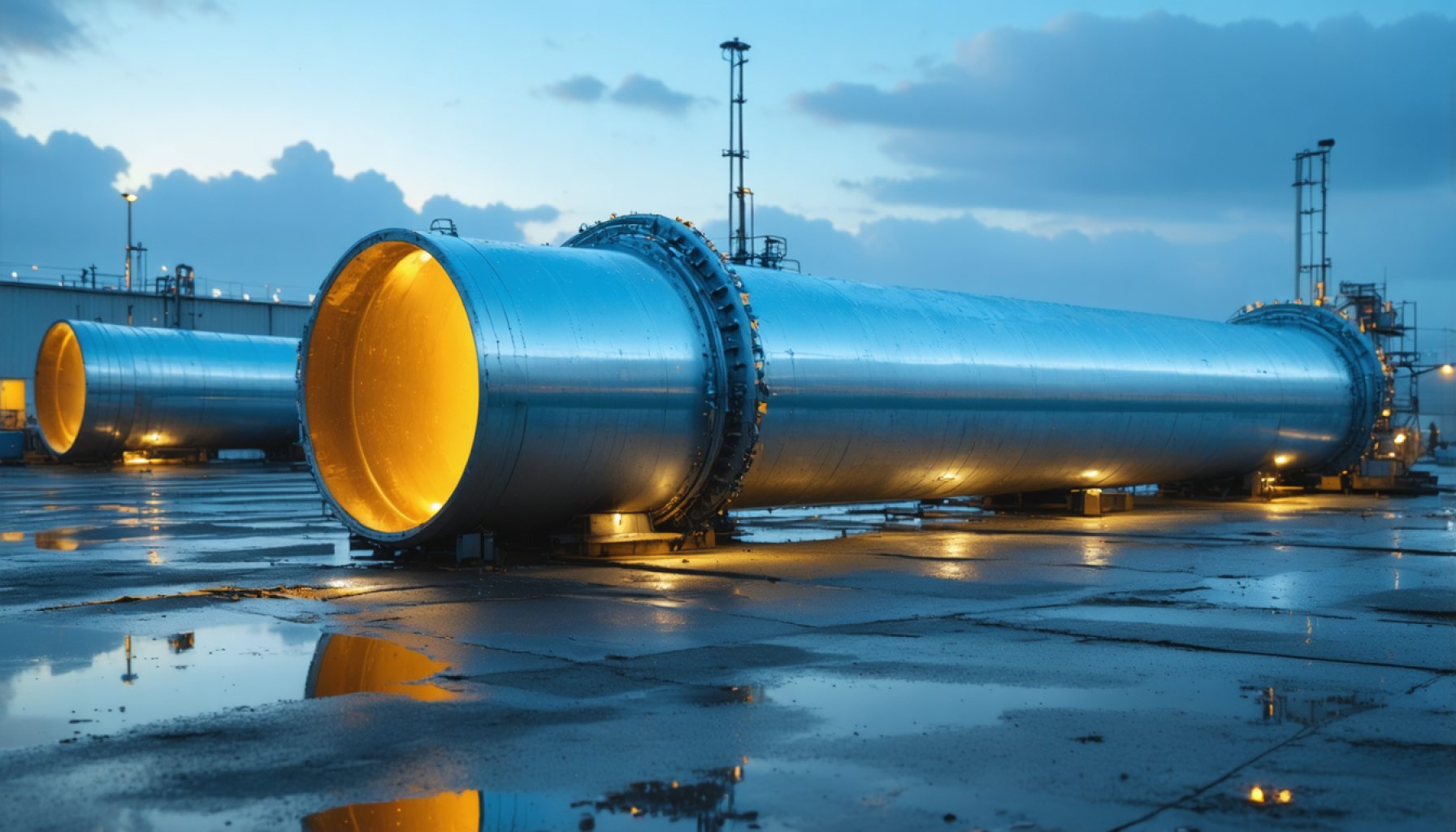- Clean hydrogen is pivotal for decarbonizing sectors like transportation and heavy industry.
- The sector is experiencing rapid growth and significant investment, driven by innovation and opportunity.
- Challenges include high costs, infrastructure development, and reliance on renewable energy for green hydrogen production.
- Effective policy reforms and substantial R&D investments are essential for the transition from fossil fuels.
- Businesses must balance ambition with pragmatism to succeed in the hydrogen market.
- Understanding the complexities of clean hydrogen is crucial for companies aiming to contribute to a sustainable energy future.
The world stands on the precipice of a new energy era, one where clean hydrogen promises to transform industries and power a sustainable future. This invisible gas, touted as a beacon of hope for decarbonizing sectors ranging from transportation to heavy industry, ignites imaginations and boardroom discussions alike. Yet as the fervor grows, a critical examination of the clean hydrogen landscape is imperative.
Amidst a flurry of innovative projects and substantial investments, the clean hydrogen sector pulsates with the energy of innovation. Companies, large and small, leap into the burgeoning market, eager to stake their claim. However, behind this excitement lies a complex web of technological challenges and economic considerations.
Reality punctures the dream as experts weigh the promise of hydrogen against the realities of cost and infrastructure. The transition from fossil fuels, while environmentally imperative, demands substantial investment in research and development, as well as sweeping policy reforms. Companies navigating this evolving landscape seek the fine line between opportunity and overreach.
At the heart of the matter lies a pivotal truth: not all hydrogen is created equal. While the term “clean hydrogen” evokes visions of purity, producing it without carbon emissions remains a daunting task. The reliance on renewable energy sources to generate “green hydrogen” marks just one facet of this challenge.
As industries strive toward a cleaner future, the hydrogen narrative remains a balanced act of ambition and pragmatism. For businesses, the takeaway is clear: understanding the intricacies of this market will dictate their role in a potentially transformative energy revolution. In this race to sustainability, knowledge is as crucial as innovation, guiding firms as they navigate the path from hype to reality.
The Hydrogen Revolution: How Clean Hydrogen Could Reshape the Energy Landscape
Understanding Clean Hydrogen and Its Types
Clean hydrogen, often dubbed the “fuel of the future,” has the potential to revolutionize industries by providing efficient, pollution-free energy. However, it’s important to differentiate between various types of hydrogen based on production methods and sustainability:
– Green Hydrogen: Produced via electrolysis powered by renewable energy, like wind or solar. It is considered the most sustainable form due to zero emissions during production.
– Blue Hydrogen: Made from natural gas but employs carbon capture and storage (CCS) technologies to minimize emissions.
– Grey and Brown Hydrogen: These are produced from fossil fuels without emissions reduction measures, contributing significantly to pollution.
Real-World Use Cases of Clean Hydrogen
1. Transportation: Hydrogen fuel cells can power buses, trucks, and even passenger vehicles, providing a green alternative to fossil fuels.
2. Industry: Heavy industries such as steel and cement production can use hydrogen to reduce carbon emissions effectively.
3. Energy Storage: Hydrogen can be used to store excess renewable energy, providing a buffer for renewable energy grids and ensuring a stable energy supply.
Market Forecasts and Industry Trends
According to recent reports, the global hydrogen market is expected to reach $300 billion by 2030. The push for investments and innovation in green hydrogen could accelerate this growth, with Europe and Asia expected to lead.
IEA suggests that government policies and private investments will dictate the pace of hydrogen adoption.
Reviews & Comparisons
Green vs. Blue Hydrogen: While green hydrogen is more sustainable, blue hydrogen remains a significant player due to its current cost-effectiveness and well-established technology.
Controversies and Limitations
1. Cost: Currently, the production of green hydrogen is costlier than blue hydrogen, due to the high price of renewable energy and electrolysis technology.
2. Infrastructure: Establishing the infrastructure for hydrogen production, transportation, and storage is capital-intensive and requires coordination between various stakeholders.
3. Storage & Safety: Hydrogen is highly flammable, necessitating robust safety protocols for storage and transportation.
Security and Sustainability
1. Stability: Proper safety mechanisms and infrastructure will mitigate the risks associated with hydrogen’s flammability.
2. Sustainability: Continued research is essential for improving the efficiency of hydrogen production methods.
Actionable Recommendations
– For Policymakers: Develop and implement policies that incentivize green hydrogen research and infrastructure development.
– For Businesses: Engage in collaborative innovation efforts focusing on reducing production costs and enhancing safety measures.
– For Investors: Watch the growth in hydrogen technologies closely, as developments here could signal lucrative opportunities.
For more on the ongoing progress and forecasts in the energy sector, consider visiting IEA and stay informed on policy changes and technological advancements.
Quick Tips
– Stay updated with the latest trends in hydrogen energy by setting alerts on key industry publications.
– Companies considering transitioning to hydrogen technology should perform a cost-benefit analysis, taking into account both environmental impact and economic viability.
– Engage with stakeholders in the hydrogen ecosystem to explore partnerships that can accelerate your role in this evolving market.
In conclusion, while clean hydrogen holds significant promise for a sustainable future, navigating its challenges requires a strategic blend of innovation, policy reform, and economic foresight.


